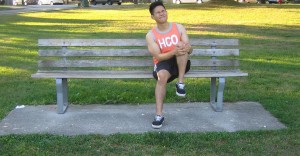Kneecap dislocation occurs when the kneecap is not aligned properly and usually slips out toward the outside part of the leg which results to swelling of the area. This injury usually happens due to twisting of the knee with a planted foot during gymnastics or dancing. It can also be caused by direct trauma to the knee that causes swelling and pain in the affected area and instability of the knee.
Symptoms of knee dislocation
- The knee appears deformed
- The knee could not be bent and there is difficulty in straightening it
- Swelling
- Pain and tenderness of the affected area
- “Sloppy kneecap” in which the kneecap can be moved right to left. Once this occurs, it causes pain and inability to walk. If this condition is left untreated, it will damage the knee joint.
The knee could not be bent and there is difficulty in straightening it
Treatment
- Avoid moving the joint to its original position.
- The doctor will perform reduction which slides the kneecap back into its proper place.
- Splint the affected leg properly but avoid placing pressure on the kneecap. Avoid wrapping the splint on the legs too tightly to prevent any disruption in the circulation. Loosen the splint if there is numbness, loss of sensation or lack of pulse in the foot.
- Get enough rest especially the affected leg to promote fast healing of the condition.
- Elevate the knee above the level of the heart
- Apply an ice pack for at least 10-15 minutes at 4 times every day for a few days after the injury.
- Take the prescribed over-the-counter pain medication such to lessen the pain and swelling.
- After the kneecap is back in its proper place, wear a knee brace to prevent another dislocation. The tissues in the knee take about weeks to heal and regain stability.
- Avoid putting significant stress or pressure on the knee for a few weeks after the injury for fast healing.
- Once the knee feels better, seek the help of the physical therapist for some rehabilitation exercises for strength and stability of the area and ensure restoration of the full range of motion of the kneecap.
More Information
The details posted on this page on knee dislocation is for learning purposes only. To learn to recognize and manage muscle and joint injuries including knee dislocation, enroll in a first aid course with one of our training providers.

